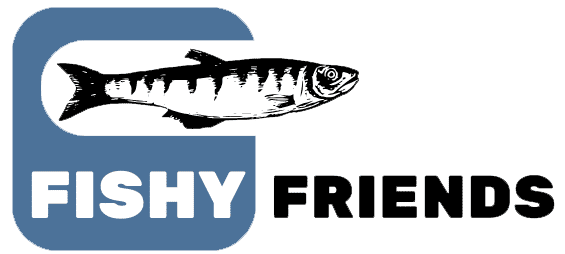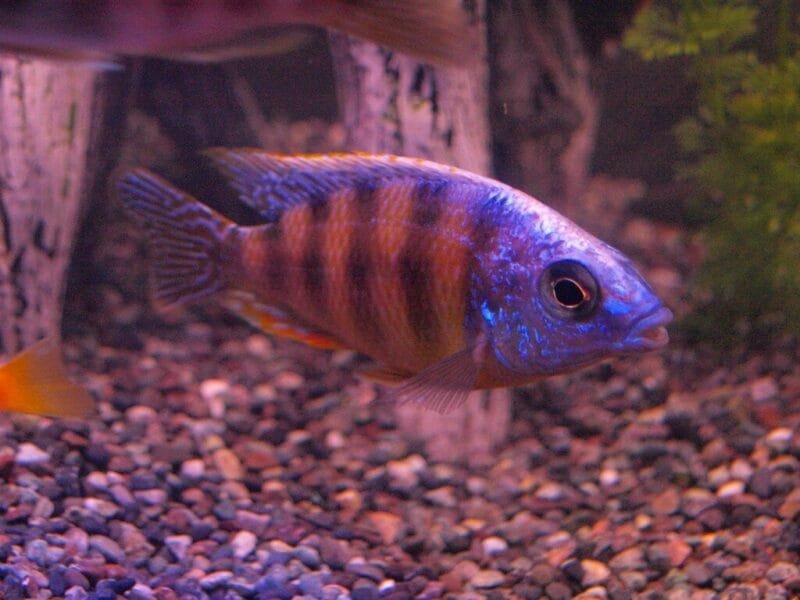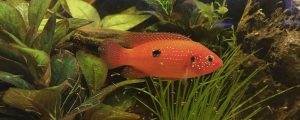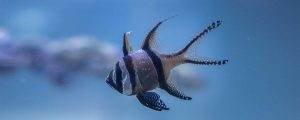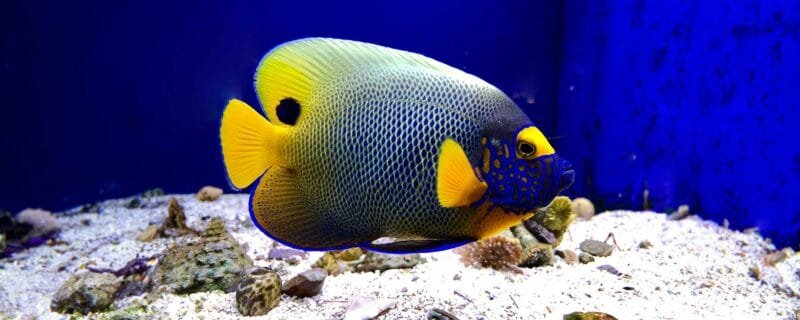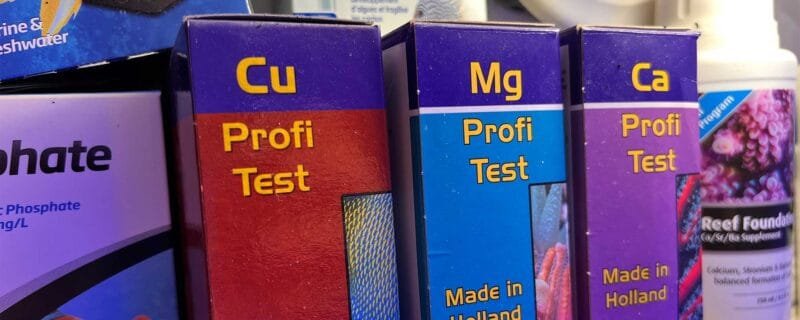Among the most popular and vividly colored dwarf cichlids in the aquarium hobby, Agassiz’s Dwarf Cichlid (Apistogramma agassizii) stands out as a true gem of the Amazon Basin. This small yet vibrant fish combines intelligence, intricate social behaviors, and dazzling coloration, making it a favorite among aquarists who appreciate personality as much as beauty.
Belonging to the Cichlidae family, A. agassizii is native to slow-moving blackwater tributaries in South America, where it inhabits leaf-littered streams shaded by dense jungle canopy. In captivity, it thrives in well-maintained aquariums that mimic these natural conditions—soft, slightly acidic water and plenty of hiding spots.
Native Habitat
Apistogramma agassizii is native to the Amazon River Basin, spanning regions of Peru, Brazil, and Colombia. It typically inhabits calm, shallow waters—particularly creeks, backwaters, and flooded forest areas with sandy or muddy substrates covered in decaying leaves. These environments provide natural tannins that tint the water brown and create soft, acidic conditions ideal for this species.
Appearance and Size
Adult males are the showstoppers of this species. They display brilliant hues of blue, red, yellow, and orange, often depending on the geographic variant. Their elongated dorsal and caudal fins flare beautifully during courtship or territorial displays.
Females, by contrast, are smaller and more subtly colored—usually golden-yellow with darker markings. Despite their modest appearance, females transform into striking bright yellows when guarding eggs or fry.
-
Average Size: Males grow to about 3 inches (7.5 cm), while females remain smaller at 2 inches (5 cm).
-
Body Shape: Elongated and streamlined, with a slightly pointed snout.
Water Conditions and Tank Setup
Ideal Water Parameters
To mimic their natural environment, provide the following conditions:
-
Temperature: 75–82°F (24–28°C)
-
pH: 6.0–7.0 (slightly acidic preferred)
-
Hardness: Soft to moderately soft (2–10 dGH)
-
Tank Size: Minimum 20 gallons for a breeding pair; larger tanks are recommended for community setups.
Tank Setup Tips
-
Use fine sand substrate—they love to dig and sift.
-
Add driftwood, caves, coconut shells, and leaf litter to provide hiding spaces and mimic their natural environment.
-
Live plants such as Java fern, Amazon sword, and Anubias help create shaded areas and stable water quality.
-
Keep the lighting subdued; this species prefers low-light conditions.
Diet and Feeding
Apistogramma agassizii are omnivorous, feeding on a mix of animal and plant matter. In the wild, they consume small invertebrates, insect larvae, and detritus.
In the Aquarium:
Provide a varied diet for optimal health and coloration:
-
Live or frozen foods: Daphnia, bloodworms, brine shrimp, and mosquito larvae.
-
High-quality flakes or pellets: Choose those formulated for cichlids or tropical fish.
-
Vegetable matter: Occasional spirulina-based foods or blanched vegetables.
Feed small amounts two to three times daily, ensuring no food remains uneaten to maintain water quality.
Temperament and Compatibility
Despite being cichlids, A. agassizii are generally peaceful—especially when compared to larger relatives. However, males can become territorial during breeding.
Ideal Tank Mates:
-
Bottom dwellers such as Corydoras catfish.
-
Avoid fin-nippers or aggressive species that might stress or injure them.
Community Tank Suitability
Excellent for community aquariums, provided each male has sufficient space and visual barriers. A single male with multiple females in a well-structured environment often works best.
Sexing Differences
Sexing Apistogramma agassizii is relatively straightforward:
-
Males: Larger, more colorful, and have elongated dorsal and tail fins.
-
Females: Smaller, rounder bodies with yellow coloration and darker markings, especially visible when breeding.
Breeding Behavior
Breeding A. agassizii is both fascinating and rewarding. They are cave spawners, meaning the female lays eggs in a secluded cavity, such as under a rock or inside a small cave.
Breeding Conditions:
-
Slightly warmer water (around 80°F or 27°C).
-
Soft, acidic water encourages spawning.
-
Provide caves or half coconut shells as nesting sites.
Spawning Process:
The female guards the eggs devotedly while the male patrols the territory. Eggs hatch in about 2–3 days, and the fry become free-swimming within a week. The female continues to care for the fry, guiding them around the tank and protecting them from other fish.
Feed fry with infusoria or baby brine shrimp for strong growth.
Ease of Care
Difficulty Level: Moderate.
While not overly demanding, Apistogramma agassizii requires stable water conditions and proper tank setup to thrive. Beginners with some experience in maintaining tropical aquariums can succeed with this species.
Consistent water quality, peaceful tank mates, and a well-decorated environment are key to their health and longevity.
Species Variations
Because Apistogramma agassizii inhabits a vast geographic range, several color variants exist, often named after their collection locations:
-
“Tefé” – blue-green bodies with striking red accents.
-
“Santarem” – deep orange and red tones.
-
“Fire Red” – a selectively bred form with brilliant red fins.
-
“Double Red” – males with dual red bands on their fins.
These variations all share the same care requirements but differ dramatically in coloration, making them a favorite among aquascaping enthusiasts.
The Albino Agassiz’s Dwarf Cichlid
The Albino Apistogramma agassizii is a selectively bred variation featuring a pearl-white body with red eyes and subtle pink or gold highlights.
Although genetically identical in care and temperament to the wild type, albino specimens are slightly more sensitive to light and water fluctuations. Their pale coloration, however, creates a captivating contrast in planted aquariums.
Provide subdued lighting and the same water parameters, and they will thrive just as beautifully as their colorful relatives.
FAQs
1. How many Agassiz’s Dwarf Cichlids can I keep together?
It’s best to keep one male with two or three females to reduce aggression. In larger tanks (40 gallons or more), multiple harems can coexist if there are enough hiding spots and territories.
2. What is the lifespan of Apistogramma agassizii?
With good care, these fish typically live 4 to 5 years, sometimes longer in stable, well-maintained aquariums.
3. Can I keep A. agassizii with shrimp?
Small ornamental shrimp are likely to be eaten, but larger species like Amano shrimp may coexist if the aquarium is heavily planted with ample cover.
Final Thoughts
Apistogramma agassizii is a stunning, intelligent, and behaviorally rich fish that rewards aquarists who take the time to understand its needs. Its dazzling array of colors, fascinating breeding behavior, and compatibility with many peaceful community fish make it one of the crown jewels of South American aquaria. Whether you choose a wild-type or an albino variety, this dwarf cichlid adds elegance and intrigue to any freshwater setup.
